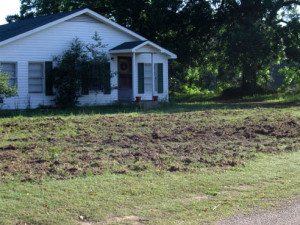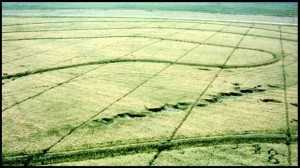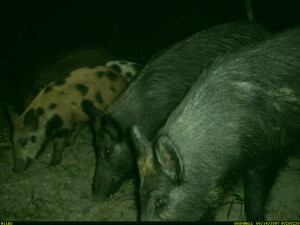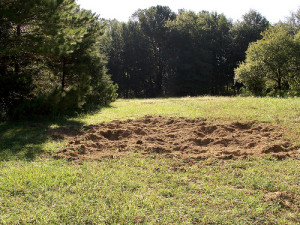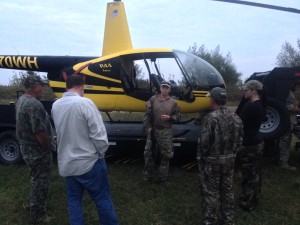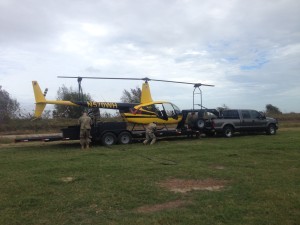Helicopter Hog Removal – Enterprise Case Study
http://youtu.be/i3saM2esR4Q
Urban, suburban or rural, feral hogs are causing problems. The rapid expansion of wild hog populations in Texas and the United States has resulted in significantly costly impacts on crops, wildlife, golf courses, yards and auto accidents due to collisions with hogs, primarily at night.
In an effort to solve the feral hog problem, government agencies have begun funding programs to help reduce hog populations. Landowners and private business people alike are investing their time and resources to reducing hog damage, some of whom have even started businesses to aid in reducing hog populations. Hog hunting operations are popular; however, due to the difficulty in successfully killing a large percentage of the hogs on a site and
the necessity or having hogs to hunt, some of these programs have not done much to help reduce populations and the problems they cause. Research shows that hogs reproduce so rapidly that to simply maintain a stable hog population, as many as 70% of the hogs on a site must be killed each year.
One of the newer innovations in hog population control companies is Vertex, a company based in Houston that offers landowners the service of reducing hog numbers at no cost! In order to achieve this, they use what I like to call the “Tom Sawyer” business model. They use a method of hog reduction that many people want to experience, and therefore they will “pay to work”.
In November of 2013 I met with Vertex President Mike Morgan and his team at Vertex to spend a day learning about what they do and to join a group of clients in a full day training program required by Vertex before participating in an aerial hog shooting effort.
I will explain the details of that experience below but first lets review some of the facts about feral hogs in order to better understand a bit about what has lead to this new type of business.
About feral hogs…
The scientific name for feral hogs is Sus scofa and it is important to know that they are not native wild animals in North America. Hogs are native to Asia and Europe and were imported to the United States for food with the earliest explorers. As such they are not a wildlife species like white-tailed deer. The word feral means “Having returned to an untamed state from domestication”. They may be considered an exotic and invasive species.
According to Texas Parks and Wildlife feral hogs are capable of breeding at six months of age with common breeding age being about 10 months of age. An average litter size may be about 6 piglets but under the right conditions may be 12. A sow will generally have 1 litter a year but may have 2 litters per year.
They give birth at all times of the year and generally are born at a 1:1 male to female ratio. They then generally travel as a group, called a “sounder” consisting of 2 sows and their young. Males, called boars, generally travel alone. They will generally live 4-8 years.
Hogs are omnivorous, meaning they eat plant and animal matter. Foods include grasses, forbs, roots, tubers, acorns, fruit etc. They also eat insects, worms, reptiles, amphibians, and mammals, primarily carrion, i.e. already dead animals, but they occasionally do kill and eat live animals as well. They like eggs and have been known to prey on quail and turkey nests. They are especially attracted to agricultural food crops such as corn, milo, rice, wheat, soybeans, peanuts, potatoes, watermelons and cantaloupe. Hogs compete directly with livestock and wildlife and cause damage to habitat and earthen water structures. They can also carry some diseases such as pseudorabies, brucellosis and many others.
It should be noted that hogs and javelina are not the same, and are actually not even related. Javelina or Collared Peccary, with a scientific name of Pecari tajacu are smaller, have an almost unnoticeable tail, only one dew claw on the hind foot, a scent gland at the base of the tail, and are more sociable or herd like animals. Unlike feral hogs, Javelina are a native wildlife species in Texas
Methods of feral hog removal
Although some landowners have been dealing with hogs for a long time, the expansion of feral hog habitat has caused them to become a bigger problem for an increased number of people than in the past.
Shooting and trapping hogs are method that have been used extensively; however, hogs learn to avoid traps if they are not caught with others in their sounder and hunting does not generally reduce the numbers enough to stop their population growth, they just become more active at night.
A variety of trapping techniques have been tested and large traps that can catch an entire sounder at once are the most effective. Both shooting and trapping involve either significant work and expense by the landowner or having a trusted landowner agent to trap or manage hunters on site.
The model that Vertex has created may offer landowners a new option through their “Helicopter Hog Hunting” program for landowners.
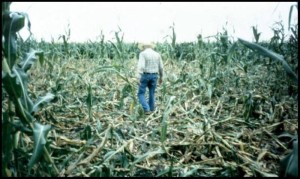
Cornfield Damage
Vertex web site states “Our mission at VERTEX Aviation Group is to serve the needs of the farmers, ranchers and landowners in our region and to serve our local communities with professionalism, excellence and trust. VERTEX Aviation Group is committed to the advancement of the helicopter industry and the needs of the people who depend on our product and services.
Our pilots have thousands of hours of military and combat experience, combined with easily the most helicopter hog hunting experience in the State of Texas. All of our Hog Hunts Ground Crews are prior military with over 20 combined combat tours in over 10 countries, as well as years of on the ground Hog Hunting Experience. Our clients deserve that level of experience.
The Texas Animal Damage Control is an agency responsible for assisting in the control of animals causing damage. The methods they use for control of feral hogs include lethal techniques such as neck snares, cage or pen traps, hunting with dogs, and aerial hunting with helicopters. Although they only have two helicopters for the State of Texas they state the method can be very effective as quickly reducing the hog numbers on a piece of property.
Texas law allows approved individuals or companies to form written agreements with landowners to act as a landowner agent and shoot feral hogs from a helicopter in order to reduce damage causing populations. Due to the large interest in hog hunting, Mr. Morgan found that the added allure of being able to shoot from a helicopter meant that he could offer landowners the service of removing hogs at no cost by charging interested people for the opportunity to act as the gunner.
In order to improve the experience for participants and ensure safety, Vertex created a full day training program. I participated in the program and can say it is worth it just for that experience alone. The training made me not only feel more comfortable with the equipment and procedure, but also provided confidence in the other participants and the level of professionalism in the company. The program starts early in the morning with friendly introductions and coffee and a program about the company. They then provide a background on feral hogs including hog biology, depredation problems and example images and experiences from landowners. This is followed by a variety of safety training including communications, behavior for entering and exiting the helicopter, the use of the AR15 rifle including some surprising tips on how shooting and aiming from a helicopter is very different from on the ground shooting. In the afternoon the real fun happens. Everyone drives to a rural location to participate in a live-fire training program while flying in the helicopter.
To conclude the day of training, a pilot takes two participants up at a time to fly over fields and then with step by step instructions practice shooting at a target that is on the ground in a field. I had never been in a helicopter or fired an AR15 and will say that it was very enjoyable. The following day some of the participants headed out to shoot hogs with success coming shortly after takeoff.
Although this may not be the right approach for some landowners it does seem to be a great, cost free option to consider. While I was with Vertex in the field, an interested landowner saw us and came by to ask questions. When he learned about the program he seemed very enthusiastic about having Vertex help remove hogs from the 10,000 acres they manage for wildlife!

